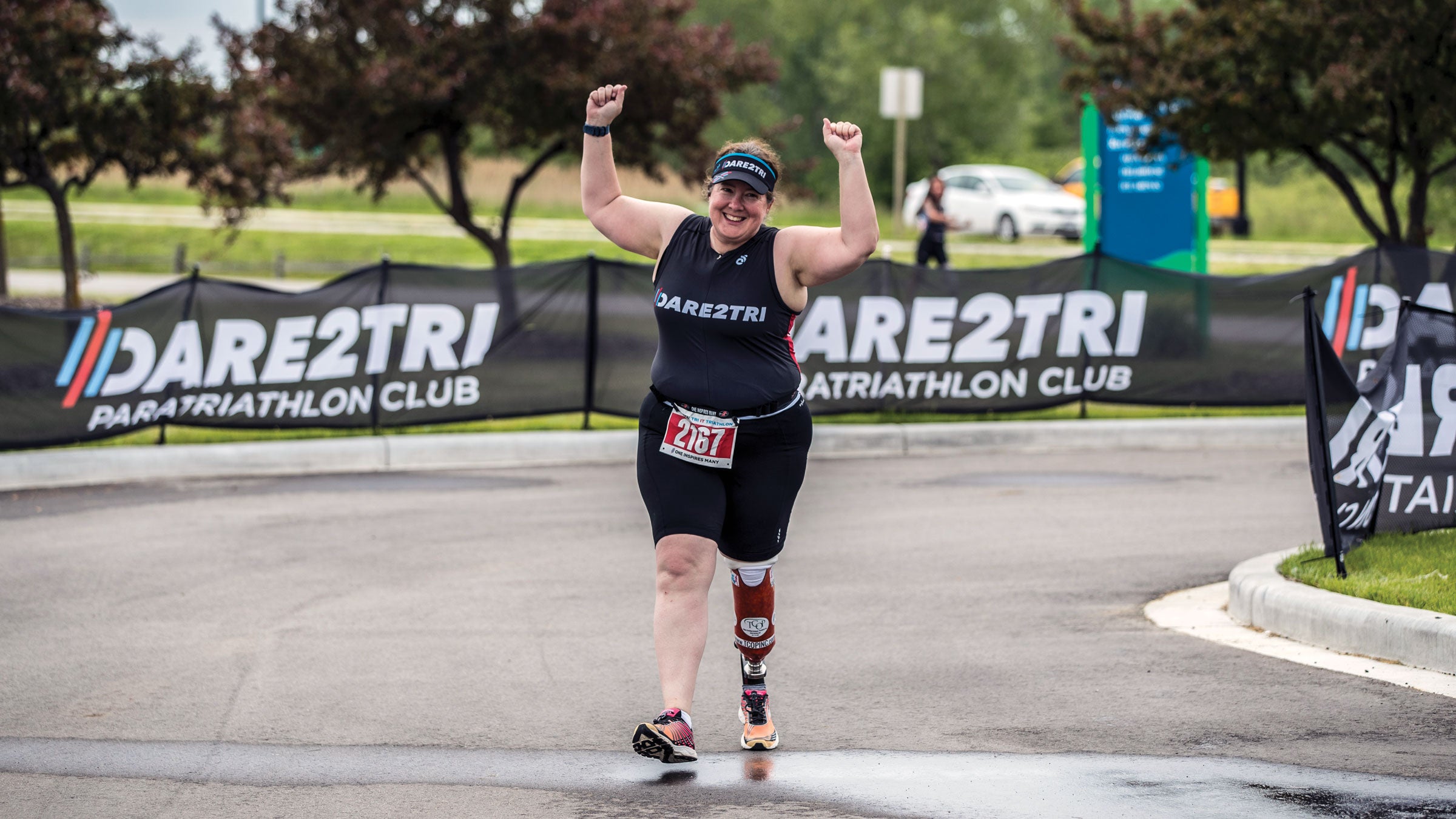#Trispo: Meet Paratriathlete Molly Lethert

When Molly Lethert went to the hospital to have her left foot amputated in October 2017, she wasn’t upset about it; she was excited. “When I got in that hospital bed, I had no desire to even touch the floor one last time,” she said. “I got on and I was ready—I couldn’t wait.”
At the age of 9, the Minnesota native severed her left foot in a snowmobiling accident. The doctors reattached it, but she had to endure more than 40 surgeries (including two ankle replacements) over the next 40 years as her foot and ankle became increasingly arthritic. After an active childhood, losing the ability to participate in sports was especially difficult; eventually, she was limited to “safe” sports—cycling and golf.
In the late ’90s, a doctor suggested amputation, but Lethert wasn’t ready to hear it. “I just kept trying to let him fix things to try to prolong it,” she said. The final straw came when she was so unstable she couldn’t walk on the front lawn of her new house. She called her doctor to schedule the amputation.
As she waited for the surgery, she researched the sports she’d be able to participate in with a prosthetic leg: triathlon, skiing, running. “I always considered myself a frustrated athlete, all growing up, since my accident,” she said. She was chomping at the bit to be active again, and in 2018, with the help of a prosthesis, the non-profit Dare2tri, and her coach, 2016 Paralympic bronze medalist Melissa Stockwell, Lethert raced three super-sprint triathlons.
The challenge now is slowing down. “Now that I have this ability to do all this stuff, I want to do it all, and I want to do it all now,” she said. She went from completing three tris in 2018 to five tris and five 5Ks in 2019, and in December she organized a five-week adaptive running clinic in St. Paul, Minnesota.
Helping other amputees find new life through sports too is another driving force for Lethert. “There are a lot of amputees who get an amputation and think their life is over activity-wise,” she said. So last year she recruited a car-full of people and drove them to the Dare2tri camp with her; this year she already has three more people lined up. She sees triathlon and running as accessible sports, with a little adaptation, because you can start with walking. “I’d love to see them find something that gets them moving,” she says.
Now, the 51-year-old is only looking ahead toward more activities she can add to her life, like skiing and mountain biking. “I don’t regret [the amputation] for a minute,” she says. “I wish I would have done it 20, 30 years ago, because I think I would have had a totally different life. It’s never too late to start.”
Paratri Basics
A version of tri for athletes with a physical disability, paratriathlon debuted at the Paralympics in 2016 in Rio. The International Triathlon Union has established six categories for elite paratri, based on the athlete’s impairment. And for age groupers like Lethert, there are “PC open” divisions at local races. Lethert also looks for a USAT Paratriathlon certification, which indicates that the race organizers have taken certain measures, such as designating an area in transition for athletes to store their equipment or avoiding a running start, to make it more paratri- friendly. Paratriathlon also accommodates athletes by allowing them to have guides tethered to them throughout the race (if they’re visually impaired), or to have handlers helping them in and out of the water and carrying their prosthetic legs to them.
Featured image by Ali Engin.